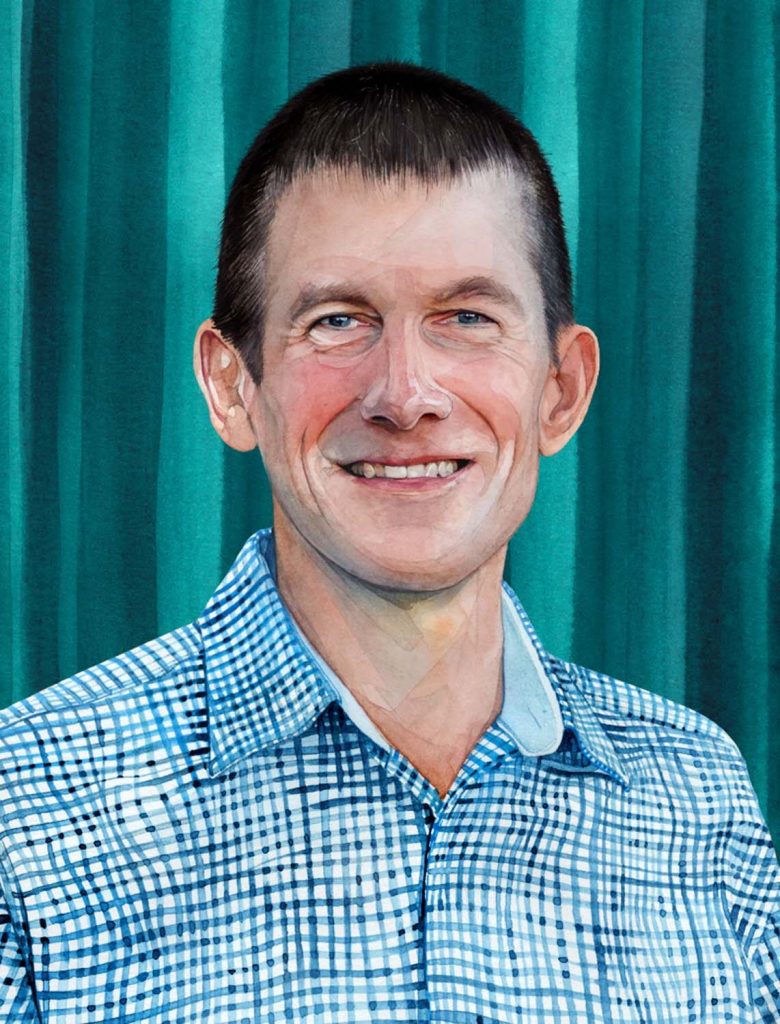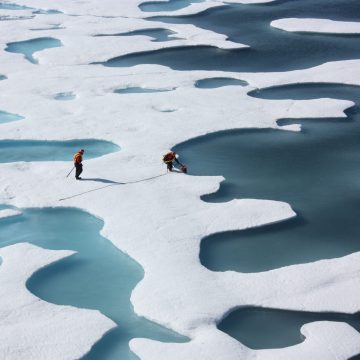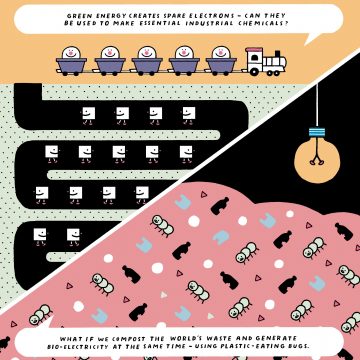Refreezing the Arctic – working with nature to buy us more time
Dr Shaun Fitzgerald on emergency measures to slow climate change.

One thing I think we all need to remember is that what goes on in the Arctic doesn’t stay in the Arctic. The work we’re doing in Cambridge seeks to buy more time while we try and get the driver of catastrophic climate change – greenhouse gas levels – reduced, and refreezing the Arctic may be one way to buy that time.
The whiteness of Arctic snow and ice reflects the sun’s radiation back into space. As that white surface disappears, radiation is absorbed instead of reflected, contributing to global heating. So while you’ve got extensive ice in the Arctic, it provides a buffering and stabilising effect on the whole of the Earth’s climate. If we let that go, it’s going to be absolutely terrible. And we’re running out of time. It’s time to look for emergency measures, such as playing the radiation game – shielding the ice from the sun’s rays, and reflecting more of it back into space.
The first method we’re exploring, under the direction of Professor Hugh Hunt, involves reflective clouds – working with nature to help clouds form over the ocean (rather than over land) where they reflect more radiation back to space.
It’s time to look for emergency measures, such as playing the radiation game – shielding the ice from the sun’s rays, and reflecting more of it back into space
In addition to partnering with Delft University of Technology in the Netherlands, Cambridge is supporting Southern Cross University in Australia. They are working with First Nation people on field trials to protect the Barrier Reef with white clouds, but their droplet generation method is not optimised – and that’s where Cambridge comes in. We are working on designing the nozzle to form droplets of the right size range, and on engineering the spray system, such as with a wind turbine that powers a pump. We’re calling this project Marine Cloud Brightening.
Another possible way to shield the ice from the sun is by deploying aerosols at a stratospheric level. Scientists found that, following the eruption of the Mount Pinatubo volcano in the Philippines in 1991, the whole planet cooled by 0.5 degrees for an entire year. This is because 20 million tonnes of sulphur dioxide were ejected into the stratosphere as aerosol, where it reacted with water vapour to form diluted sulphuric acid which reflected some of the sun’s radiation, acting as a coolant. So, can we recreate that effect using aerosols?
My colleague Dr Francesco Muschitiello is studying paleoclimate data to model the effects of volcanoes in the geological past. Others are looking at how we might get the aerosols into the stratosphere, as well as the designs of aeroplanes and balloons.
Our third method explores increasing the thickness of the Arctic ice during the winter. Floating sea ice forms by freezing from the bottom up. The latent heat of solidification is conducted up through the ice to the top surface where it then dissipates. But as the ice thickens, it slows the rate at which new ice can form. We’re exploring whether pumping water over the top, which will increase the surface temperature at which heat is radiated to space, will speed up the heat transfer and increase the rate of solidification, thereby creating thicker ice. Thicker sea ice lasts longer through the year, providing a white surface that reflects the sun’s radiation back even during the Arctic summer, when the sun shines 24/7.
Finally, the fourth method we’re exploring involves hanging curtains in the sea. It sounds strange, but the toes of glaciers are constantly being nibbled by a warm stream of saline water that moves upwards from the equator. We’re working with Professor John Moore from the University of Lapland, who had a simple idea of obstructing this warm water so it can’t touch the glaciers. Rather than building a concrete wall, could we tether some kind of fabric to the sea bed, held in place by buoys below the surface, which would reduce the flow but let marine life through?
We’re at the exciting, collaborative stage of exploring the possible, all with the aim of staving off the worst effects of climate change while we put measures in place to reduce greenhouse gas levels.
To learn more about the work of Cambridge Zero, visit zero.cam.ac.uk







